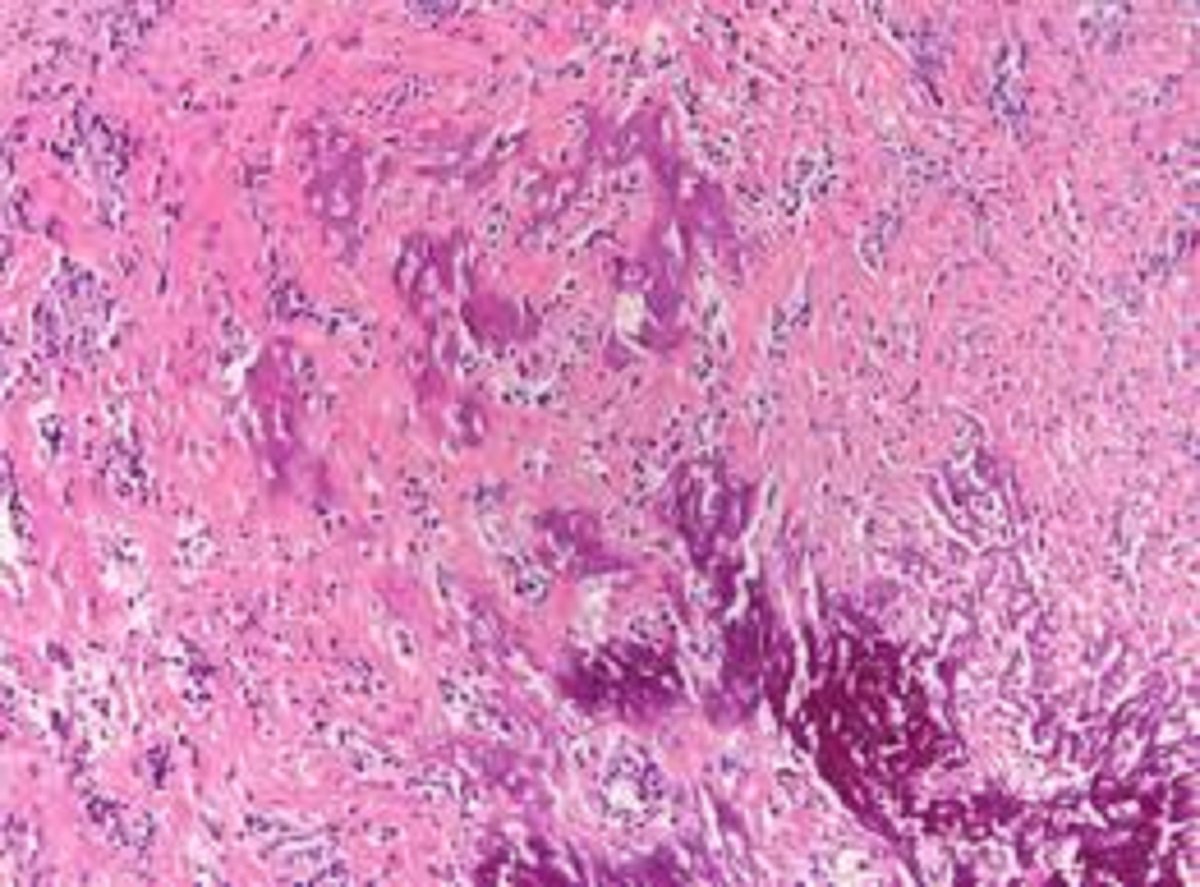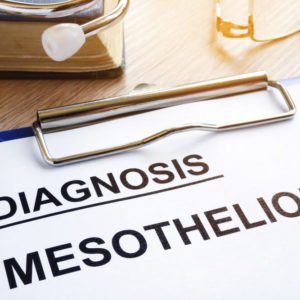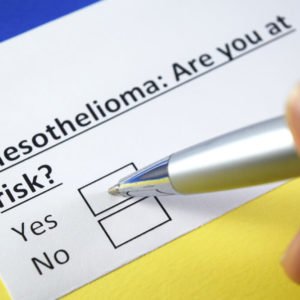Sarcomatoid Mesothelioma

Sarcomatoid mesothelioma is the least common cell type of the rare asbestos cancer mesothelioma, making up only 7 to 20 percent of all new diagnoses in the United States. This is the deadliest and most aggressive of the three histological cell types, compared to epithelioid and biphasic mesothelioma.
Diagnosing sarcomatoid mesothelioma can be particularly challenging, with the disease resembling many other types of illnesses. In addition, treatment options are very limited.
Defining Characteristics of Sarcomatoid Cells
Like all other types of mesothelioma, sarcomatoid mesothelioma is caused by asbestos exposure. Sarcomatoid cells affect a person’s supportive tissue ─ such as bones, muscles and cartilage ─ as compared to the membranous tissue that is affected by epithelioid cells.
Sarcomatoid cells are shaped like ovals, similar to a spindle, and they have no nucleus. Their structure is less uniform, and they have a much more random arrangement than the epithelioid cells, forming farther apart in lesions or nodes and making them more likely to metastasize.
Sarcomatoid mesothelioma is also known as spindled mesothelioma, diffuse malignant fibrous mesothelioma and sarcomatous mesothelioma.
Sarcomatoid Subtypes
There are three subtypes, or variants, of sarcomatoid mesothelioma cells:
- Transitional Mesothelioma: Transitional mesothelioma cells resemble transitional carcinoma cells from the kidney or bladder, making them difficult to distinguish when making a diagnosis. The cells are plump and spindle-shaped.
- Desmoplastic Mesothelioma: Desmoplastic mesothelioma is one of the most difficult subtypes to diagnose. These patternless cells, first discovered in 1980, can remain undetected until they metastasize, or spread, to fatty tissue in the chest wall.
- Lymphohistiocytoid Mesothelioma: Lymphohistiocytoid mesothelioma is a very rare subtype of sarcomatoid, accounting for only 1 percent of all asbestos cancers. The tumors are made up of thick bundles of inflamed white blood cells, plasma cells and histiocytes. This type of mesothelioma is often misdiagnosed as lymphoma.
Diagnosing Sarcomatoid Mesothelioma
 The first step in diagnosing sarcomatoid mesothelioma is to discuss the symptoms and identify whether the patient has been exposed to asbestos, either on the job, during their time in the military or at home.
The first step in diagnosing sarcomatoid mesothelioma is to discuss the symptoms and identify whether the patient has been exposed to asbestos, either on the job, during their time in the military or at home.
The doctor will then perform imaging tests such as MRIs, CT scans and X-rays to pinpoint abnormalities. A biopsy will be taken to test the tissue and determine the cell type. Because sarcomatoid mesothelioma can resemble many other types of diseases, the traditional type of biopsy (core needle biopsy) may not be as effective for diagnosis.
Immunohistochemistry is considered the best procedure to make an accurate diagnosis of mesothelioma. This technique involves staining the tissue and studying the reactions between specific antibodies and the proteins from the tissue sample.
Difficulties with Diagnosis
Sarcomatoid mesothelioma tumors can resemble a variety of both malignant and benign conditions, making a proper diagnosis challenging. Some of the most common misdiagnoses that patients receive include localized fibrous tumors, fibrosarcoma and malignant fibrous histiocytoma.
Because it is so difficult to diagnose, it is recommended that patients seek second and possibly third opinions to ensure an accurate diagnosis.
Sarcomatoid Symptoms
Sarcomatoid mesothelioma symptoms are similar to those related to other types of the asbestos cancer. The location of the symptoms may vary depending on whether the cancer is in the pleura (tissue surrounding the lungs and lining the chest cavity) or the peritoneum (tissue lining the abdominal cavity and abdominal organs).
Patients may experience symptoms such as:
- Shortness of breath or difficulty breathing
- Persistent and/or painful cough
- Pain in the chest or abdominal area
- Build-up of fluid in the chest or abdomen
- Weight loss or trouble eating
- Nausea or vomiting
- Weakness or fatigue
- Feeling of abdominal “fullness”
If you are experiencing any of these symptoms, you should speak with your doctor right away. Be sure to explain your history of asbestos exposure.
Sarcomatoid Treatment
Treatment options for sarcomatoid mesothelioma are usually limited due to the late stage at which the cancer is typically diagnosed and the resistance of these types of cancer cells to treatment. The course of treatment will depend on the location of the patient’s cancer and the stage. Treatment may include:
Surgery
Surgery to remove sarcomatoid tumors may be considered if the cancer is caught in the earliest stages. However, oftentimes the cancer has metastasized to other parts of the body by the time it is diagnosed, making surgery an ineffective treatment option in most cases.
Chemotherapy
 For those who may not be good candidates for surgery, a combination of chemotherapy drugs may be considered. However, patients have seen little success in the use of chemotherapy.
For those who may not be good candidates for surgery, a combination of chemotherapy drugs may be considered. However, patients have seen little success in the use of chemotherapy.
Radiation Therapy
Doctors may also recommend radiation therapy as a palliative treatment aimed at reducing the patient’s symptoms and relieving their pain and discomfort.
If you or a family member has been diagnosed with mesothelioma, talk to your doctor about what treatments may be best for you. You may also want to explore clinical trials for mesothelioma, as well as holistic approaches that aim to care for body, mind and spirit.
Sarcomatoid Mesothelioma Prognosis
Because sarcomatoid mesothelioma cells are often resistant to treatment, the median life expectancy is less than six months. Patients who are younger, healthier or diagnosed in an early stage have a better prognosis. Overall, the life expectancy can range from one month to around 28 months.
What Causes Malignant Mesothelioma?
Exposure to asbestos is the only known cause of sarcomatoid mesothelioma. People who worked with or in the vicinity of asbestos materials may have inhaled or ingested the cancer-causing fibers. In addition, they may have carried asbestos dust home on their clothing, skin or hair, leading to secondhand exposure among family members.
When microscopic asbestos fibers are inhaled or ingested, they may stick in the mesothelium lining of the lungs, chest wall, abdominal cavity, heart or testicles. The body is unable to expel these dangerous fibers, leading to irritation and scarring of the tissue. Mesothelioma can develop 15 to 60 years after a person was exposed to asbestos.
It is important to note that there is no safe level of asbestos exposure. Whether you were exposed to the carcinogen on a daily basis or just once, there is a risk for developing mesothelioma and other related diseases.
Occupational Exposure to Asbestos
Millions of Americans have been exposed to asbestos on the job, in the military, in their homes and in public buildings. For years, asbestos companies knew that asbestos causes life-threatening diseases such as malignant mesothelioma, lung cancer and asbestosis, yet they failed to warn the public of the dangers of their products.
Unfortunately, there are many people who were at risk of asbestos exposure as part of their everyday jobs. Occupations with the highest risk of exposure include:
- Boiler room workers
- Carpenters
- Construction workers
- Electricians
- Factory workers
- Firefighters
- Laborers
- Mechanics
- Military service members
- Pipefitters
- Plumbers
- Power plant workers
- Roofers
- Utility workers
 Anyone who installed, maintained, repaired, replaced or demolished asbestos-containing materials or equipment would have been at high risk for exposure to the carcinogen.
Anyone who installed, maintained, repaired, replaced or demolished asbestos-containing materials or equipment would have been at high risk for exposure to the carcinogen.
If you have a history of asbestos exposure and are experiencing any respiratory problems, you should talk to your doctor immediately. The earlier asbestos diseases are diagnosed, the better options a patient has for more effective treatment.
Need Financial Help After a Diagnosis?
People who have been diagnosed with sarcomatoid mesothelioma face serious expenses related to treatment and care. Family members and other caregivers often shoulder additional financial burdens as they struggle to support their ill loved ones.
You should know that there is financial relief available for mesothelioma patients and their families. You and your family may be entitled to compensation for:
- Medical expenses such as surgery costs, hospital bills, medications, hospice care, etc.
- Travel expenses related to your mesothelioma treatment
- Lost income as a result of your illness, as well as diminished earning capacity in the future
- Pain and suffering
- Wrongful death damages related to your family’s loss
A knowledgeable mesothelioma lawyer can explain your legal right to recover compensation from the asbestos companies that are responsible for your disease. You may be eligible to file a claim through an asbestos bankruptcy trust fund and/or pursue a mesothelioma lawsuit against the at-fault parties.
Contact us today to get the trusted legal advice you need during this difficult time.
Download Your Free Patient’s Guide
Do you and your family need free mesothelioma advice about the next steps after a diagnosis? At Mesothelioma Help, we are here to support you during this difficult time. When you download our free guide, you will get:
- Free legal advice and guidance from one of the nation’s top mesothelioma lawyers
- Medical recommendations from the mesothelioma, lung cancer and asbestosis community
- Free resources and useful information to start making important decisions today
- An opportunity to connect with brave mesothelioma survivors and their families
- Information about the latest cancer treatment options
- Details about mesothelioma doctors, treatment centers and facilities near you
- Whether you are caring for a family member or seeking mesothelioma treatment for yourself, you will find all the information here to start coping with a diagnosis.
DOWNLOAD YOUR FREE PATIENT’S GUIDE NOW
Sources:
